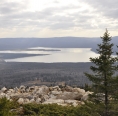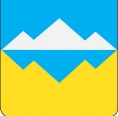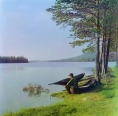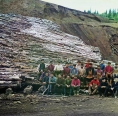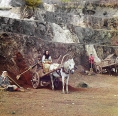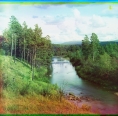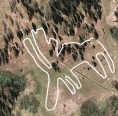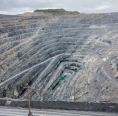-
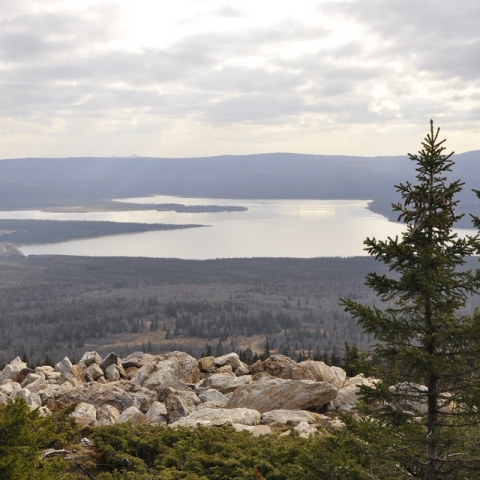
Satka
Satka is a tiny spot on the map of Russia, a small contour on the map of Chelyabinsk region. It is a small town located in the highest-mountain region of South Ural with a population of more than forty thousand people. Nevertheless, Satka has not lost itself in a crowd of similar towns. It lives, actively develops, has its own identity.
It is because of large natural, historical and cultural objects located in Satka and around the town. Satka is a centre of the district which can be called a kind of champion of ‘the mostest’: the highest altitude lake in Europe – Zuratkul Lake (724 m above sea level); the highest mountain in Chelyabinsk Region – Bolshoy Nurgush (1,406 m) with the largest mountain table in the region (about 9 sq. km); the highest concentration of minerals (about 70 types) within the area of one square kilometre near Moskal Range; the most number of caves (more than 40) in Sikiyaz-Tamaksky cave town, the only cave town in Russia, a multilayer archaeology site; the largest magnesite deposit in Russia; the most unique natural, historical and world industry monument – Porogi area, where the first in Russia ferrosilicon and ferrochrome plant is located.
Satka district is "the mountain heart" of South Ural, which is reflected in the main symbols of the area – emblem and flag – depicting three mountains. They allegorically symbolise the highland of South Ural, confidence and firmness. The inverted sky-blue form symbolises the pearl of the area, Ritsa of Ural – Zuratkul Lake. The sky-blue colour of the heraldic signs reflects the beauty of the area, its splendour and the highness of endeavours. The gold colour shows affluence and the power of fire. The silver colour symbolises excellence, purity, faith in the world and generosity of Satka people.
However, the most important distinction of Satka from other towns is the people who know how to live, work, have rest, build and create.
So, what is Satka? The meaning of the place-name Satka is not fully clarified, although scientists, historians and local history experts have long been trying to arrive at a common view. There are numerous interpretations and each one has its own historical grounds. It is unlikely that even next generations of Satka people will come to the only true definition of the town name.
‘Sold land” toponym (translation from the Bashkir language) suits the historical passport of the town the most.
On 13 November (old style) 1756, according to the order of the Mining Board, baron S.G. Stroganov bought the areas of Ajlinskaya and Kuvakanskaya Volosts, rich in natural resources and beauty, from the Bashkirs. It was the beginning of construction of Troitsk-Satka ironworks and settlements around it. However, the date of Satka foundation is considered to be the start-up of the plant – 19 November (old style) 1758 – when two blast furnaces produced the first output.
If, however, the land was bought from the Bashkirs, could it be appropriate to consider toponym ‘shatkey’ coming from the name of the Bashkir family group within Kuvakan tribe from which it was bought?
The town might get its name from the River Satka. ‘Shade’ translated from the Turkic means ‘milk’. So the ironworks, the very beginning of Satka settlement, is located on the milk river. The ironworks, which has come through numerous events within its long history (Pugachev's Rebellion, liberation of the workers from involuntary service to the plant, fires and large floods, revolutions and wars, years of repressions, numerous changes of owners and managers, production reorientation), always recovered and continued its activity serving Russia from century to century. It has been bringing honour to our town for over 260 years: first – by production of the special grade of Satka cast iron, now – by high-carbon ferromanganese.
The buildings of the plant are located at the confluence of two rivers: Big and Small Satka. So toponym ‘interfluve’, as some local history experts think, can also exist.
Thanks to writer N. Pogodin, Satka is also called a town of blue stone. Petr Salnikov, a research assistant of the ironworks, discovered deposits of beautiful mineral, magnesite, in the neighbourhood of the settlement. This discovery defined the future of the town for centuries. In 1900, production of magnesite and construction of the magnesite plant, the first Russian refractory plan, started. The opening ceremony was held on 8 September (old style) 1901. Four years later, the products of Magnezit partnership association gained worldwide fame having received the gold medal at the International Exhibition in the Belgian town Liege.
In dreadful 1940s, Satka was not at the forefront of the war, but as the entire country it was doing everything to approach the Victory. Our countrymen fought on all fronts, got to Konigsberg, Berlin and Prague. The workers on the home front bore the burden of the war time and in the face of many difficulties provided the metal-makers with refractories of Magnezit plant.
Starting from the 1950s, Satka people, tired of the war, started building a peaceful life. The first and second lines of the new magnesite plan were put into operation. Magnezit Cultural Centre, considered to be the best architectural building in 1951, was built. Architect T.M. Ervald, the author of the project, was awarded with Stalin Prize. The health care centre of Magnezit plant, Trud stadium, Magnezit sports centre were built. Construction of the new residential complex in the West microdistrict was started.
At the moment, it is the largest high-duty refractory plant in the world, the flagship of the Russian refractory industry having over 1,200 partner-companies.
Another folk toponym, ‘Ural Hollywood’, took flight upon making of four feature films in Satka: The Man Who Used to Be Lucky, The Man from Graveyard, Red Sky. Black Snow and Shack.
The most popular toponym used by the locals is the ‘Crossing’. Satka knows a lot of outstanding people whose lives crossed in Satka.
Chemist Peter Simon Pallas. He came to Troitsk-Satka ironworks under the instruction of Catherine II in May 1770. In his work Travels Through Various Places of the Russian Empire, he gives a detailed description of the plant and its neighbourhood: the Big Satka River, Yurak-Tau (Zuratkul) Lake, Kurgazak cave and other.
Geologist Ivan Lepyokhin. He explored Satka ironworks in summer 1770 and paid a lot of attention to it in his work Daily Notes During the Travel Through Different Provinces of the Russian Empire.
Peasant rebellion leader Yemelyan Pugachev. On 1 June 1774, he reached Satka ironworks and received a hospitable welcome from crowds of the workers. They greeted him loudly, fired guns and cannons, rang the church bells. Then they presented him with several cannons. The memory about Pugachev in our area is preserved in numerous legends and stories, there are also a lot of place-names: Pugachev embankment, Pugachev pit, Pugachev dam, Pugachev hill, Pugachev path, Pugachev corduroy road, Pyanaya (drunk) Mount (in memory of the meeting of Pugachev and his supporter Salawat Yulayev).
Emperor Alexander I. The preparations for the visit of the emperor started in May 1824. The manager of the plant was instructed to “repair the roads and bridges, put milestones, paint the buildings, reconstruct the facades”. The emperor arrived at Satka plant on 20 September (old style) 1824. He stayed overnight at the house of the plant manager. On the next day, he listened to the communion service at the Holy Trinity Church, inspected the plant buildings and some houses of the workers.
Railway engineer Nikolay Garin-Mikhailovsky. During the construction of the railway near Satka (1888-1890), he proposed a lot of solutions which helped to reduce the cost of railroad construction. Later, the real events of construction of one of the tunnels provided the basis for his stories Leshy Swampland and Variant.
Chemist Dmitri Mendeleev. In 1899, he took part in the expedition in South Ural. His work Ural Iron Industry in 1899 contains a detailed description of Satka ironworks.
Inventor of colour photography Sergey Prokudin-Gorsky. He visited South Ural in summer 1909. There are 16 colour photographs made by him at Satka plant and Bakal Mines.
People's Commissar of Heavy Industry Grigory Ordzhonikidze. He visited Satka and Bakal in September 1934. In Bakal, he held a meeting on the choice of the site for a new iron and steel plant (which was later built in Chelyabinsk). In Satka, he met the heads and workers of Magnezit plant.
The tenth World Chess Champion Boris Spassky. Since 2003, he has been heading the regional chess school of on-site and off-site learning for children and youth in Satka. Twice a year, he visits the school sessions and share his experience with young chess players
RF Minister of Defence Sergey Shoygu. In 2004, Sergey Shoygu visited Satka and took part in the Russian Open Championship on All-Round Completion of RF EMERCOM Rescuers.
President of the Russian Council on Culture and Art Ekaterina Genieva. In 2012, Satka for the first time hosted World Without Borders forum on development of culture innovations, moderated by Ekaterina Genieva.
Animated film director Garri Bardin. For 15 years, he has made 15 films honoured with numerous awards both in Russia and abroad. Under his direction, Satka children made Our Helper Magnesite cartoon showing the emotive power of their parents’ work.
‘Fork of the road’ is one more toponym. It also suites the town name as many Satka people chose different ways. They make their town famous far outside it.
Satka people think that ‘Spark’ toponym suits the modern portrait of the town the most. The town is sparkling with cultural events arranged by Magnezit Group, Sobranie Cultural Initiative Supporting & Preservation Fund, Administration of Chelyabinsk Region and Satka District.
Only Satka has Magnezit museum, the best example of the modern museum. A virtual branch of the State Russian Museum has been working in Satka (the third in succession in the region) for a number of years. Ural Industrial Biennale events are held regularly. Not many people have the opportunity to be proud that their mother-town hosts travelling exhibitions of the masterpieces of the State Russian Museum. What other towns do regularly have the Days of French, Swiss and Italian Culture with programmes including displays of photographs, concerts, conferences, exhibitions of foreign artists, literature presentations, meetings with interesting people, screening of new films and presentation of modern music?
Satka hosts festivals of various types and levels: Elena Obraztsova's Festival of Classical Music "Carmen", Philharmonic Meetings, "Festival of Education and Science" and other. It would just suffice to mention "Big Arts to Small Towns" unique project. Only for the last years, Satka people have had the opportunity to enjoy the talent of the world-class artists: Elena Obraztsova, Denis Matsuev, Yuri Rozum, Igor Butman, Vladislav Tchursin, Veronika Kozhukharova, Aleksey Skanavi and many more. Thanks to "My Satka" architectural festival, "Satka Street Art Fest" international festival of street art, various architectural projects of Ivan Korzhev, a monumentalist, a Distinguished Artist of the Russian Federation, the town is transforming and becoming more beautiful right in front of your eyes.
Magic charm of Satka land draws scientists, writers, travellers, speleologists and tourists like a magnet. All of them share their impressions in the books, albums, prospects, notes placed in more than six hundred print publications about Satka land.
If you have not been to this wonderful town, visit it! The museum guides will tell you about the history, nature and sights of Satka in more details. You will be able to walk along the red (Proletarskaya) street, enjoy the street art objects, stand at the edge of the open pit which depth is more than a height of a ten-storey building. You will see everything what Satka people are proud of and understand why they love their Small Motherland.
Lubov Ezhova (Honoured worker of culture of the Russian Federation, citizen of honour of Satka Municipal District).
PHOTOS of S. M. PROKUDIN-GORSKY.

